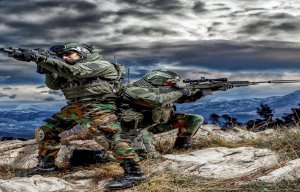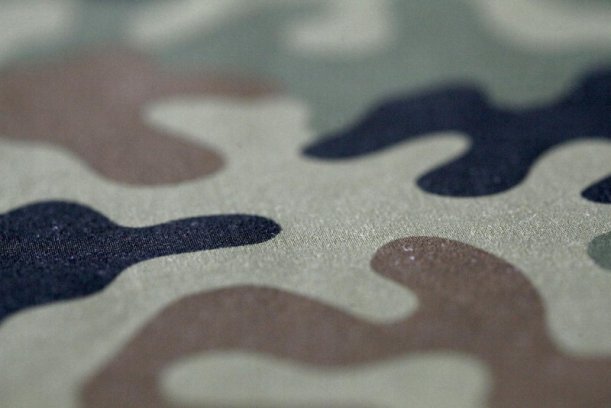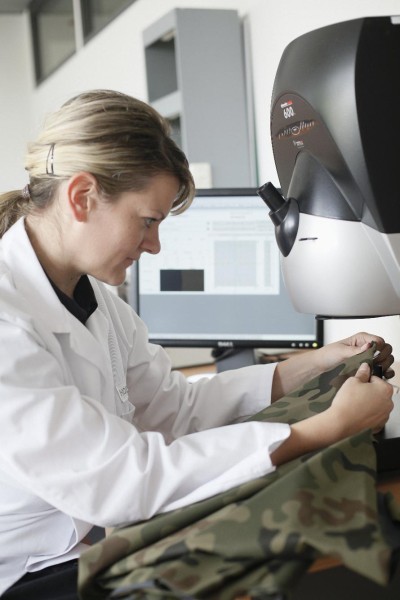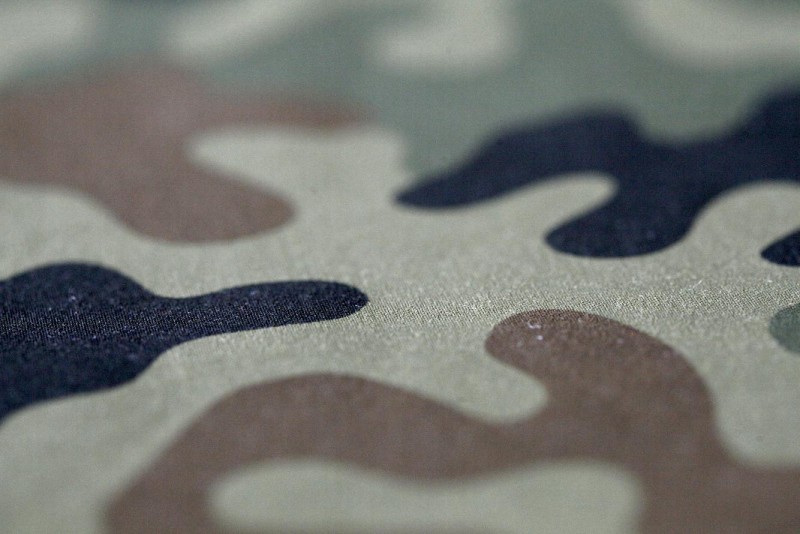
Report highlights need for advances in protective clothing
The textiles were impregnated or coated with chemical fibres containing indium tin oxide nanoparticles (ITO).

19th October 2015
Innovation in Textiles
|
Boennigheim
 Camouflage plays a vital role in daytime and night-time military operations. The use of camouflage prints and special dyes ensures that people and equipment are hard to detect because they blend in with the surrounding terrain.
Camouflage plays a vital role in daytime and night-time military operations. The use of camouflage prints and special dyes ensures that people and equipment are hard to detect because they blend in with the surrounding terrain.
Since all bodies emit heat, known as infrared radiation (IR radiation), it is now possible with the help of thermal imaging cameras to see people even in complete darkness.
The Hohenstein Institute has developed textiles, as part of a research project, which provide effective screening against infrared radiation and are of interest for use in uniforms for the armed forces.
Military combat suits are usually made using the standard camouflage patterns of 3-5 colours in shades of brown and olive green. In daylight, these camouflage prints, when perfectly matched with the terrain, enable users to melt into the background and so protect them from being seen by the enemy.
When white light falls on the uniform, certain parts of the light spectrum are absorbed and others reflected. This is why the uniforms appear multicoloured. Because the human eye can distinguish between over 350,000 different shades, colours have to be measured with a spectrophotometer.
The colour measurement process investigates which parts of the white light are reflected by the sample of material that is being tested. These are measured statistically so that any deviations from the colour specifications can be identified. That is the only way to ensure that the colours in the camouflage pattern meet the technical requirements. The optical camouflage effect is tested when the textiles are new and after artificial ageing, using spectrophotometric colour measurement in accordance with DIN EN ISO 11664 and DIN 5033.
Night-time operations are a challenge not only for the soldiers but also for their clothing. Special materials ensure that the revealing infrared thermal radiation produced by the warmth of the soldiers' bodies is absorbed. That is why infrared-absorbing inorganic or organic pigments (special vat dyes) are used for the camouflage prints on uniforms, to ensure that the wearers are largely invisible to the CCD sensors on night-vision devices.

The Hohenstein Institute uses spectrophotometric reflectance measurements to test whether the maximum reflectance limits comply with the regulations (e.g. technical terms of delivery). However, these dyes only cover short-wave infrared radiation. With the help of thermal imaging cameras which also capture long-wave infrared radiation, a person's thermal signature can still be visible despite the special vat dyes.
The Hohenstein experts wanted to counteract this effect and so as part of a research project they developed new materials. The textiles were impregnated or coated with chemical fibres containing indium tin oxide nanoparticles (ITO). ITO particles are transparent semiconductors that are familiar from their use in touchscreens and smartphones. The innovative textile finish is said to ensure that the person's thermal radiation is absorbed far more effectively, while the same level of wearing comfort is maintained.

Business intelligence for the fibre, textiles and apparel industries: technologies, innovations, markets, investments, trade policy, sourcing, strategy...
Find out more